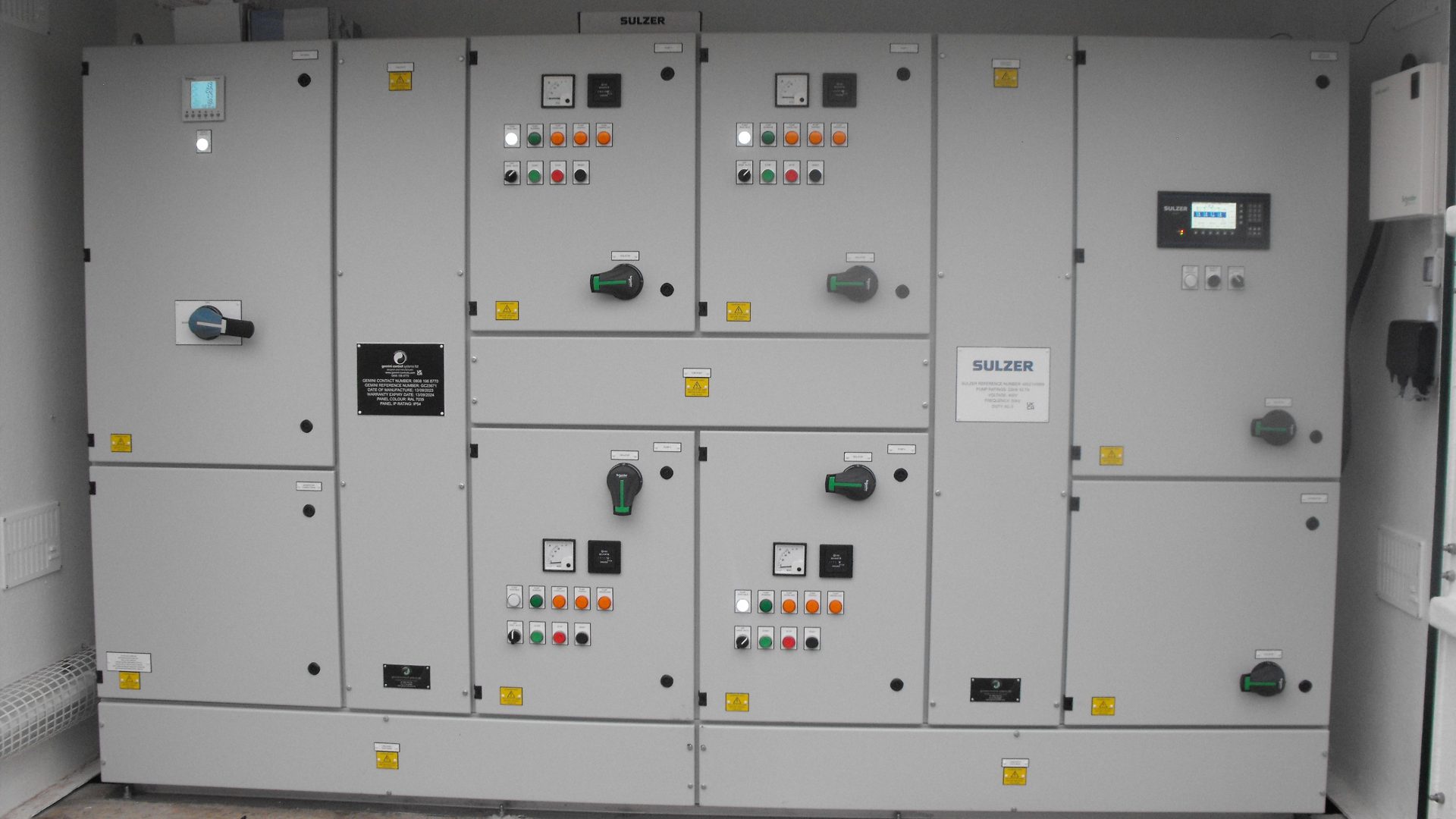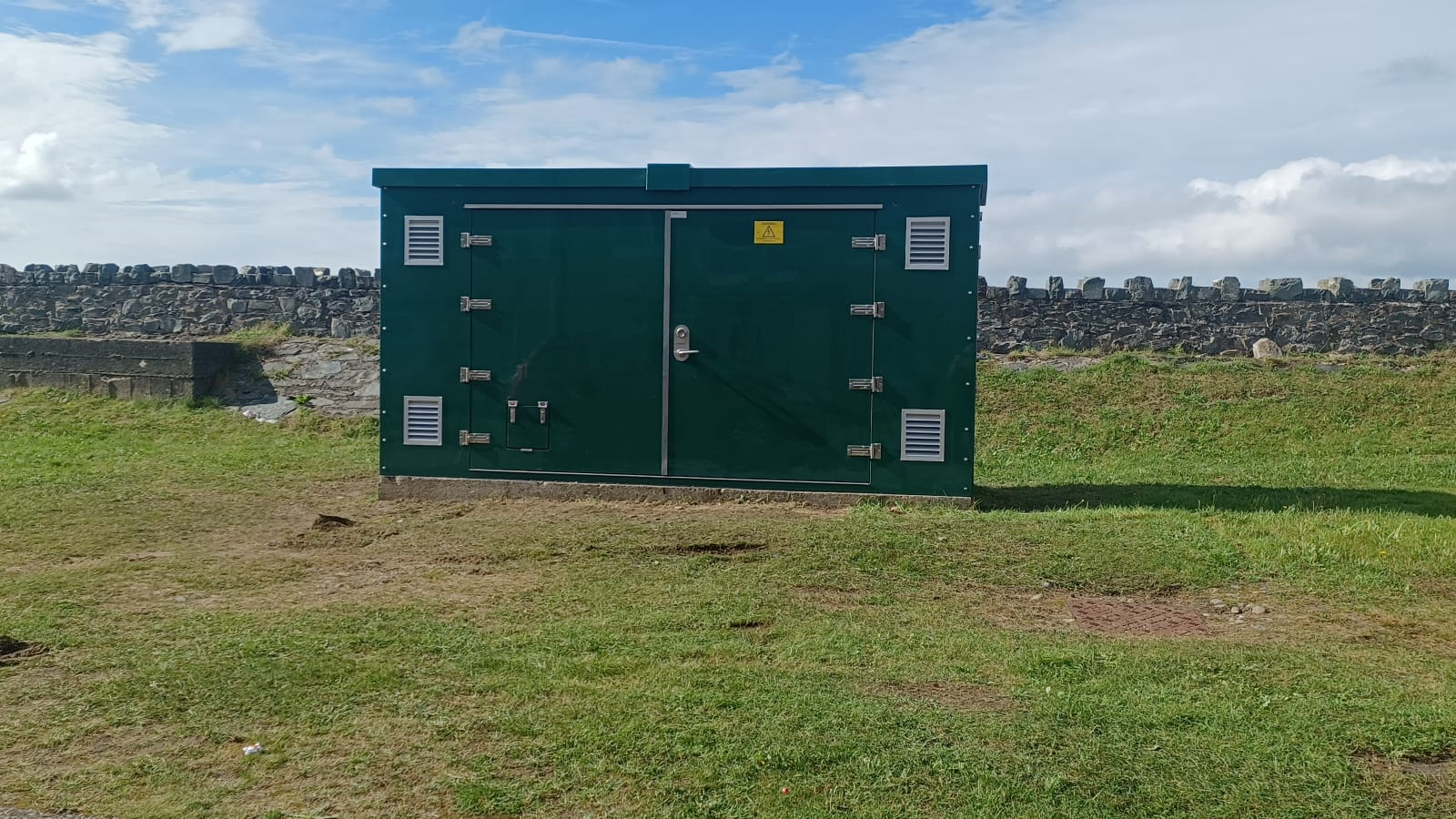Barmouth is a seaside town and community in the county of Gwynedd, in north-west Wales, located in Cardigan Bay, on the estuary of the Afon Mawddach. The town’s low-lying frontage has been developed on reclaimed land, however further in land, the topography rises steeply towards the slopes of the Rhinog mountain range.
Rainfall across the catchment varies from 1000mm per year on the coast up to 2400mm per year on the higher ground. The impermeable soils, combined with high precipitation, result in quick response to such weather events, and as a result flooding can be associated with the watercourses that reach the town directly from the steep hill sides to the north and east.
One such watercourse is served by a pumping station located on the northern end of the Barmouth frontage. Under normal operation flow passes through a tidal check valve, however as the tide comes in, the valve is forced to shut, and the water is then required to be pumped over the promenade wall.
Gwynedd Council, who are responsible for operation of the pumping station, commissioned Sulzer to design and install a new kiosk and control panel which would allow the pumps to be manged and monitored more effectively. The upgrade works was made possible through flood risk management grant made available by Welsh Government. Design was carried out over winter 2022/23 with installation performed in late summer 2023.
Preventing flooding through advanced level control
To cope with the issue and keep the water and energy usage level down, Sulzer offered the customer a proactive solution for their pumping station – the digital monitoring system PC 441 and a new Motor Control Centre (MCC). It is designed for advanced control and monitoring of 1 to 4 pumps used in municipal wastewater applications. 5 additional units can be connected to it for more advanced monitoring.
The pump controller offers intelligence on each pumping station with a proactive approach. Using existing SCADA (Supervisory Control and Data Acquisition) communications, it is possible to visualize enhanced pumping station data such as inflow and outflow rates, mains pressure, energy consumption and water levels which can be monitored centrally. The pump controller can actively detect blockages as well and automatically reverse the pump.
During heavy rainfall, the risk of overflow increases. Sulzer control systems can identify a drop in efficiency or increased flow due to heavy rain fall. Intelligent pump control can optimise pump runtimes, detect blockages, and adjust operational sequencies to optimise performance. Individual station monitoring also allows local water levels to be transmitted to the treatment plant enabling elevated flowrates to be managed effectively.
Combating the challenges
The biggest risk during the project was keeping the previous system and station active. Sulzer had to use a temporary pumping setup and perform the changeover live as it was impossible to divert the water flow and avoid heavy rainfall during the installation.
“The key point in managing the project effectively was liaison with third parties and managing the associated risks. The major challenge for our team was a total power cut off to the site” – says Mitch Davidson – Sulzer UK Technical Manager.
In September 2023 Sulzer completed the installation at Barmouth Heol Y LLan.
Immediate benefits of digitalisation
The end of asset life and the risk of equipment failure, identified in the regular routine maintenance checks, led the customer to the implementation of the latest Sulzer technology. It has given the convenience of remote control and monitoring of the site, whereas previously it was manned two to three times a week. During wet weather events, it needed additional supervision.
Replacement of the aged flood defence system with a state-of-the-art technology, has helped the customer reduce energy usage. The pumps now run effectively minimizing operating costs
Rhydian Roberts – Principal Engineer at Gwynedd Council said:
’’Sulzer has been our supplier for 30 years. Their newly installed control and monitoring equipment has significantly reduced our operational risks. Following the successful completion of the new system, we had the ability to remotely identify the need for routine maintenance of the hydraulics on two pumps due to a decrease in flow.’’




